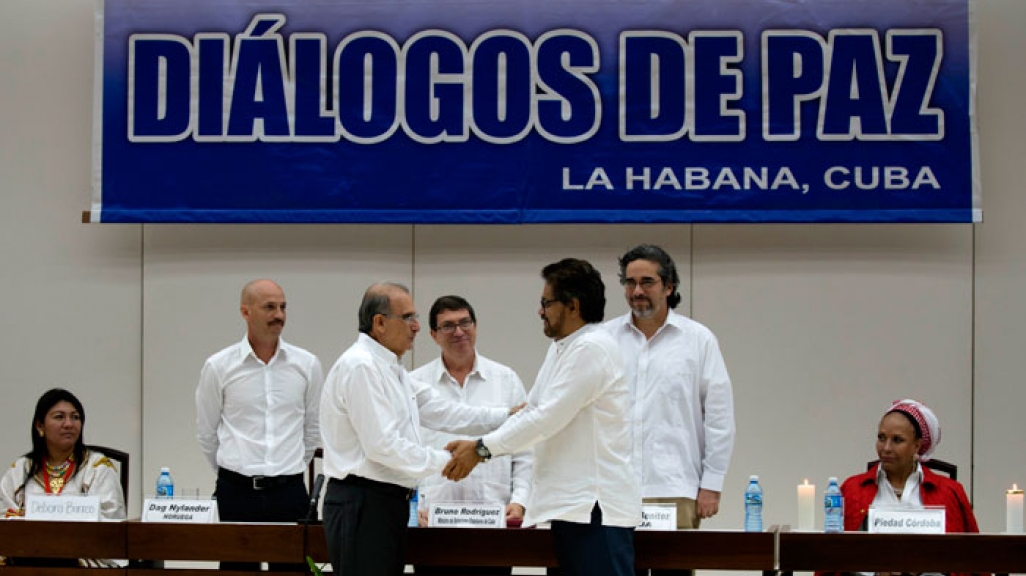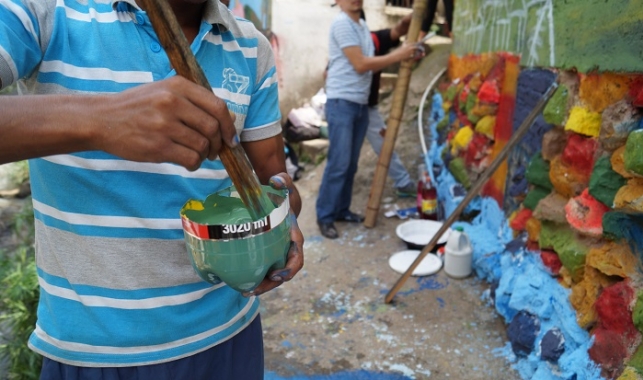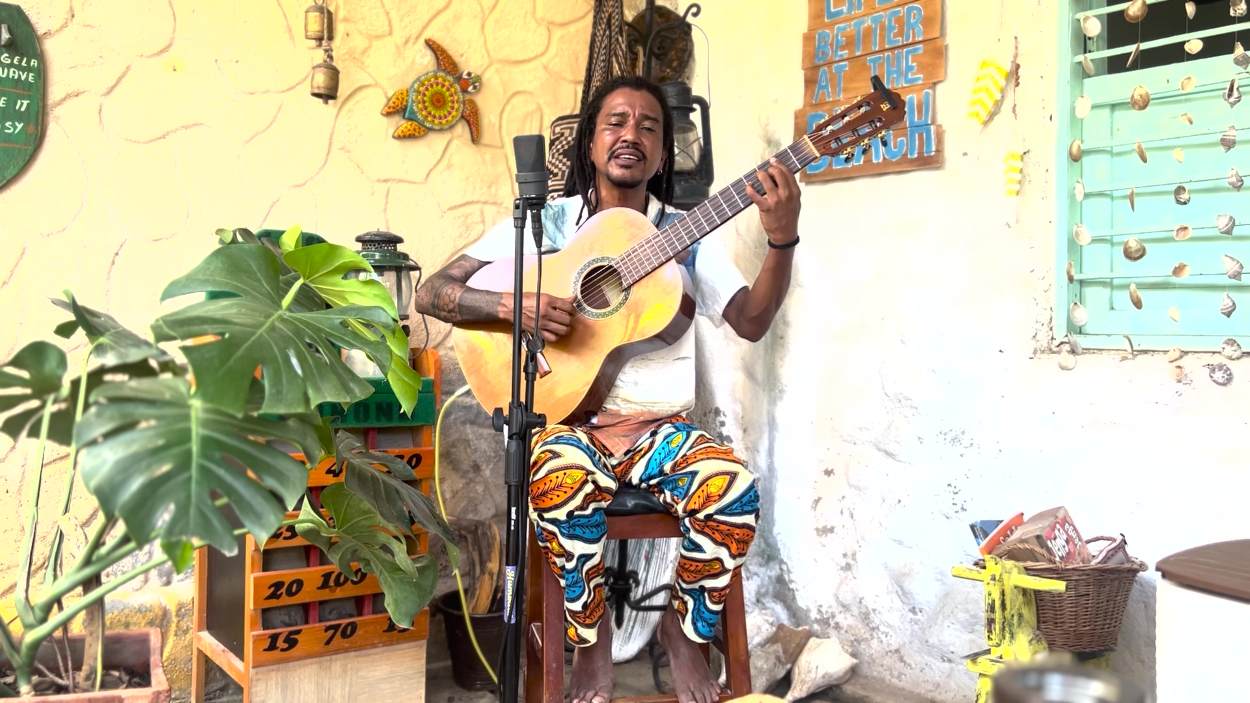Update: Colombia's To-Do List ahead of the Peace Deadline
Update: Colombia's To-Do List ahead of the Peace Deadline
With plenty still on the table for the Colombian government and FARC guerillas to resolve, both sides are now backing off the March 23 deadline.
Updated March 10, 2016 - Back in September, the Colombian government and the country’s main guerilla group set March 23 as the deadline to sign a peace agreement. The move would wrap up years of negotiations and put an end to the country’s five-decade conflict with the Revolutionary Armed Forces of Colombia (FARC). But with several complicated points still unresolved, both sides are backing off the March 23 itself, albeit still committed to signing an agreement in 2016.
The two sides set up a six-point agenda at the beginning of the talks back in 2012, and there are at least partial agreements for five of them. Of these five, the so-called “end of conflict” point has the most work left, in particular regarding how the FARC will go about their disarmament and reintegrate into civilian life.
Demobilization Zones and Reintegration
This week, the Colombian Congress approved a law that grants the government the power to create demobilization zones, areas in which the country’s security forces won’t be allowed to arrest FARC members even if there is a warrant out on the guerillas. The government’s idea is that, if an agreement is reached, guerrilla members will congregate in these zones to safely turn in their weapons.
But some are concerned the FARC won’t hold up its end of this portion of the deal. On February 18, FARC leaders, including Márquez, were seen in Conejo, a rural town in northern Colombia, talking to civilians about politics while armed guerilla members stood nearby—a violation of the peace talks’ terms. The debate in Congress on demobilization zones has prompted criticism from the opposition, which wants to avoid a repeat of the El Caguán incident in the early 2000s. In that case, then-President Andrés Pastrana cleared security forces from 16,200 square miles in southern Colombia to get FARC leaders to agree to peace talks there, but the rebels took the opportunity to regroup.
Santos insists that the new zones will be different, since no civilian population will be in them and security forces will be present. Santos also said he would not allow FARC members to have judicial benefits or engage in political canvassing as long as they remain armed.
Negotiators in Havana will also have to put mechanisms in place to ensure that guerillas will be reintegrated into civilian life. Both sides have diverging reasons for achieving this goal. The FARC wants to be sure that their unarmed members won’t become victims of targeted killings, as other leftist groups have been in the past upon turning in their weapons. Demobilized leaders of the M-19 guerrilla group—including their presidential candidate, Carlos Pizarro Leongómez—were murdered after their own peace agreement in 1990. In the 1980s and 1990s, thousands of members of the FARC-affiliated Patriotic Union party were killed.
Meanwhile, the government is also interested in guaranteeing that demobilized guerrilla members won’t join the loosely organized criminal gangs, known as Bacrim, which would become the country’s largest illegal armed group once the FARC disarm. Specifically to guard against this, President Juan Manuel Santos said that any demobilized FARC member who commits a new crime will be subject to extradition to the United States, something fighters who disarm under the agreement won’t face.
Funds for Peace
The last point to be agreed upon, which involves financing, monitoring, verification, and implementation of the peace agenda and post-conflict efforts, might prove to be the thorniest. The peace agreement would create a bureaucratic apparatus of commissions and special courts for transitional justice and truth commissions, as well as requiring spending on victim reparations and infrastructure building. But the country currently is facing financial pains; the peso fell 35 percent in 2015, and the price of oil—one of Colombia’s main sources of revenue—plummeted last year, creating a fiscal deficit of about $9.3 billion.
In 2016, the United States will give $288 million in aid to Colombia. And U.S. President Barack Obama recently pledged to ask U.S. Congress to increase the amount to $450 million for 2017. But Colombia will still have a gap to fill. Bank of America estimated the total cost for 10 years of post-conflict efforts to be about $16.8 billion, or 1 percent of GDP per year. The Colombian Congress wants to budget even more. Roy Barreras, the leader of the governing Party of the U, calculated the cost for 10 years at $28.1 billion and asked for 2 percent of the country’s GDP to be destined to cover post-conflict costs. If the peace agreement is signed, the Colombian Congress will then have to vote and approve this new budget and post-conflict line item.
What’s more, it remains undecided how transitional justice—the parallel legal system that will try crimes connected to the Colombian conflict—will work, and Santos has so far issued only partial explanations. This means that the number of special judges is still to be determined and costs can change, but also that there is plenty to discuss when it comes to the minutiae of these justice mechanism. It also remains to be seen whether the agreement would satisfy international legal requirements Colombia is party to, or if it would be granting impunity to convicted criminals, as some legal experts claim.
Getting Public Approval
The last point of negotiations deals with the means by which Colombians can accept or reject an agreement signed by the government and the FARC in Havana. Congress already approved the final text of the negotiations to be put before voters through a plebiscite, scheduled for no later than four months after the final signature of the peace agreement, and which must receive support of 13 percent of Colombia’s electorate, or 4.4 million votes in the affirmative. But the FARC leaders believe this is a one-sided solution, as they will not have a say on the text of the question put to voters. Instead, the FARC have been pushing for a constituent assembly, which the government strongly opposes because each negotiating point would have to be approved—and debated—one by one. As chief negotiator Humberto de La Calle said, “[A constituent assembly] would not be an end to dialogue. On the contrary, it’d start the process all over again.”
An Outlook for the Plebiscite
In February, Santos said that if the deadline is not met, “Colombians will understand that the FARC is not ready for peace.” But now both sides seem to be backing off the March 23 date. The group’s lead negotiator Iván Márquez hinted that they are willing to continue the talks until later this year. On March 3, Foreign Minister María Ángela Holguín said that “something will be signed on March 23,” opening up the possibility that only a partial agreement is reached that day. Then on March 9, Santos himself said, "I am not going to sign a bad agreement just to meet a deadline...If a good deal has not been reached by March 23, I will tell the other side of the table, 'Let's set another date.'" He added, "I hope we can sign. Negotiators are in the final stretch."
Meanwhile, a February Gallup poll shows that a popular vote approving the peace deal is far from certain. Fewer than a third of respondents say they will definitely participate in the plebiscite and, of them, only 53 percent said they would vote “yes” for the peace agreement. Moreover, 57 percent of Colombians have a bad image of the peace process.










